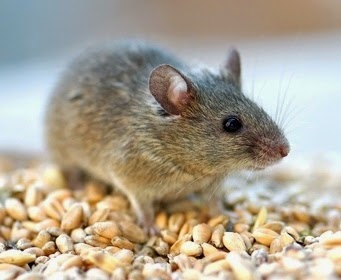When you think of poultry predators, the first thought to come into peoples heads is the cunning and resourceful Mr Fox. However, poultry keepers agree that Rats and Mice are a persistent and particular nuisance when keeping chickens.
 |
| Photo courtesy of backyardchickens.com |
It isn't however the chickens themselves that attract the rats and mice, but rather their feed. If you have your feed badly stored, or your hens are prone to making a mess while feeding then chances are sooner or later you will attract rats and mice to your chicken coop. There are some brilliant feeders available that are designed to stop your chickens from throwing their feed around and making a mess. The Wise Feeder is a mountable feeder that immediately lifts the feed up out of the way of passing rodents. It then has various lips and dividers to prevent your hens from tossing the feed about, saving on feed and limiting the number of vermin attracted to the area. Galvanised vermin-proof treadle feeders also help to reduce the number of rats and mice. It works off the simple expedient that vermin do not weigh enough to open the flap covering the feed (equally smaller wild birds do not weigh enough either) meaning that only the chickens can access the feed, while at all other times it is securely stored away.
A good option for keeping mice and rat out of the garden, perhaps the most traditional option, is a large and preferably hungry cat. Although a cat might not be everyone's idea of the best way to control vermin population, there are plenty of other ways to keep rats and mice populations low. Rat Bait Boxes, properly situated along hedgerows, by woodpiles and around the chicken coop (places where rats and mice tend to run and have nests) provide a place to put down rat poison in a locked container, where larger animals, birds or even children can not get at the poison. The Tunnel Rat Bait Boxes work particularly well, as they can be put along vermin's usual pathways for them to run right through.
Another way to help deter mice from around your chicken coop is using an Ultrasonic Indoor Mouse Deterrent. A safe option, meaning other wildlife remains unaffected, these pest controllers are a great alternative to poisons or traps. They do however have a proviso. They can only be used indoors, i.e in your stable where you keep you hens or actually inside the house with your hens. Emitting a 40khz ultrasonic pulse every eight seconds, they can cover an area of 1000 square feet, keeping mice away from your birds.
Like nearly all issues that arise in keeping chickens, the problem of rats and mice around your hen house is easily dealt with;
 |
| 10kg & 20kg Treadle Feeders |
A good option for keeping mice and rat out of the garden, perhaps the most traditional option, is a large and preferably hungry cat. Although a cat might not be everyone's idea of the best way to control vermin population, there are plenty of other ways to keep rats and mice populations low. Rat Bait Boxes, properly situated along hedgerows, by woodpiles and around the chicken coop (places where rats and mice tend to run and have nests) provide a place to put down rat poison in a locked container, where larger animals, birds or even children can not get at the poison. The Tunnel Rat Bait Boxes work particularly well, as they can be put along vermin's usual pathways for them to run right through.
Another way to help deter mice from around your chicken coop is using an Ultrasonic Indoor Mouse Deterrent. A safe option, meaning other wildlife remains unaffected, these pest controllers are a great alternative to poisons or traps. They do however have a proviso. They can only be used indoors, i.e in your stable where you keep you hens or actually inside the house with your hens. Emitting a 40khz ultrasonic pulse every eight seconds, they can cover an area of 1000 square feet, keeping mice away from your birds.
Like nearly all issues that arise in keeping chickens, the problem of rats and mice around your hen house is easily dealt with;
- Securely storing feed in a strong feed bin.
- A good feeder that prevents spillage and waste.
- Safe, contained Bait Boxes in sensible locations
- The use of poisons.
- Alternative deterrents like ultra-sonic pest control
Meaning your hens can roam free and happy, while you don't have to worry about a plague of rats or mice descending upon your homestead. If have any of your own ideas for deterring vermin, or have a question why not leave a comment below.
Thanks for Reading
James




